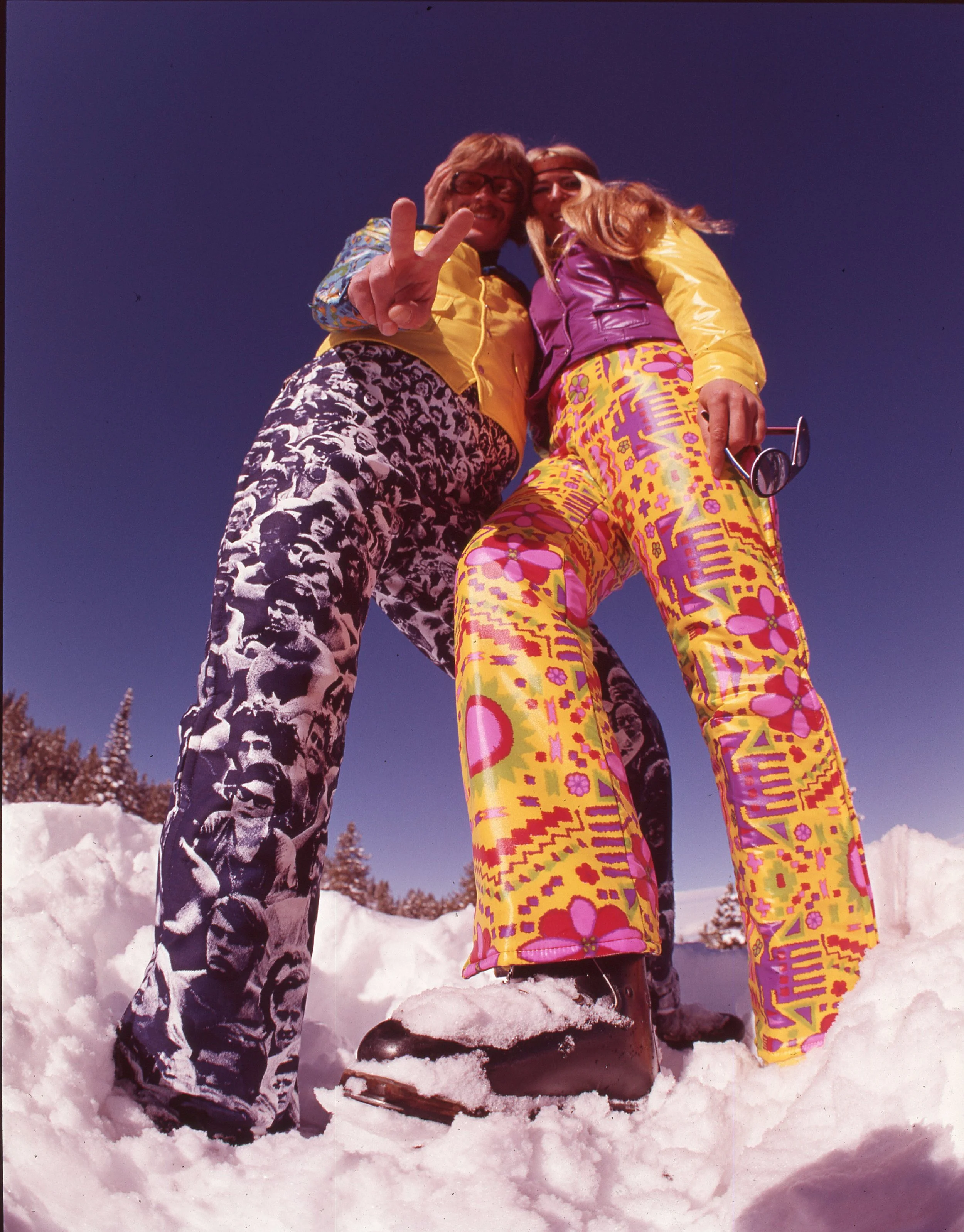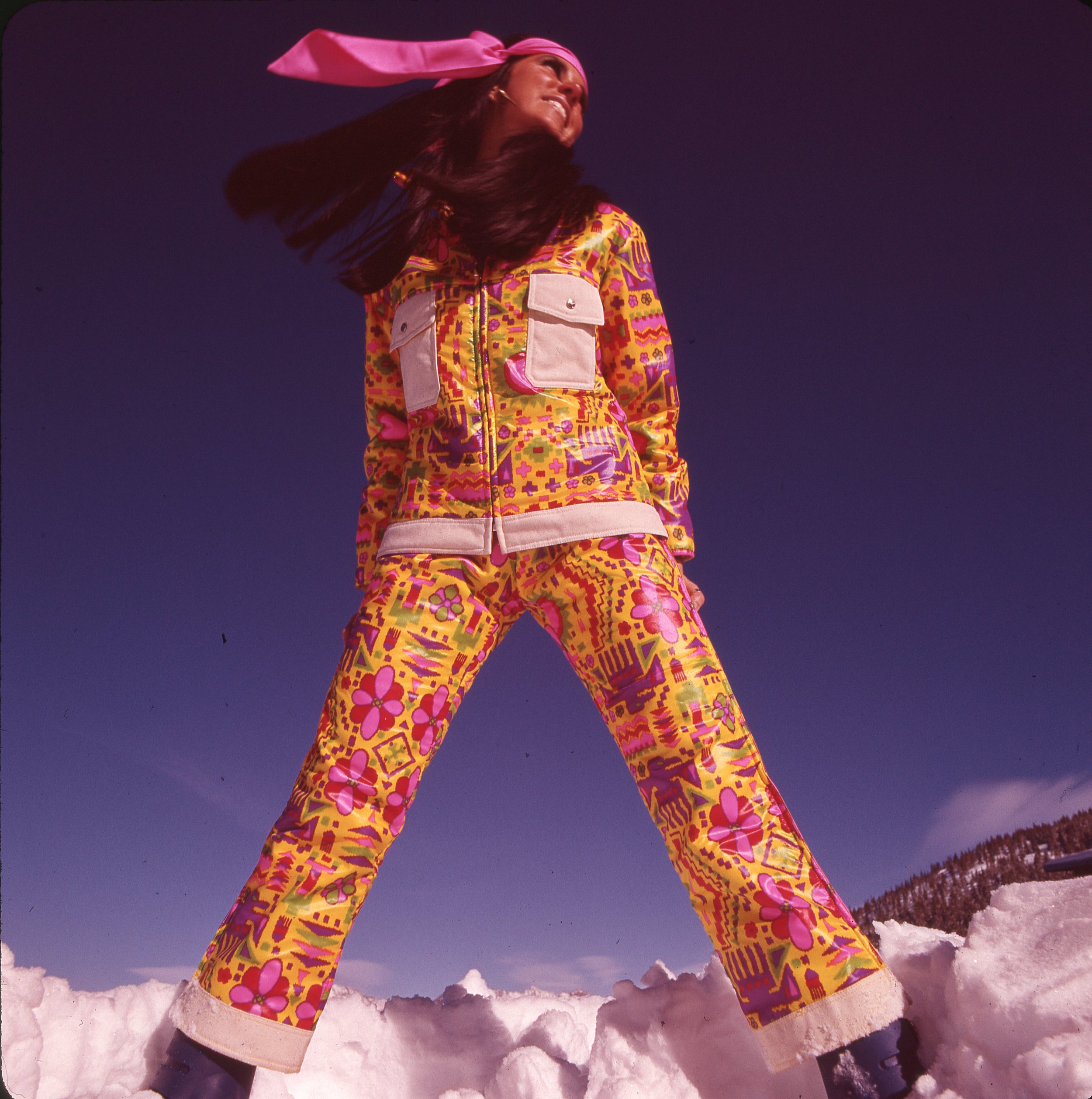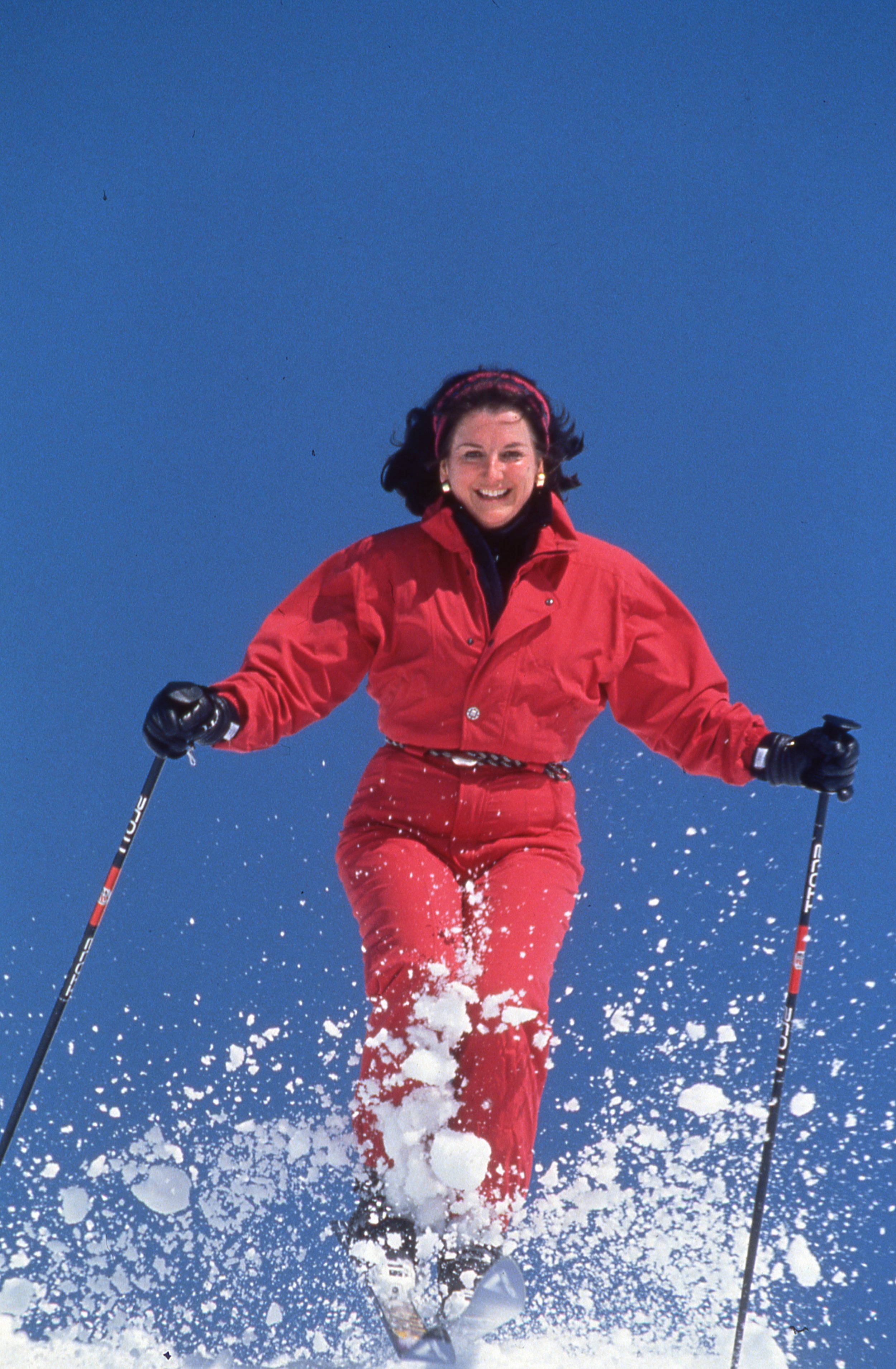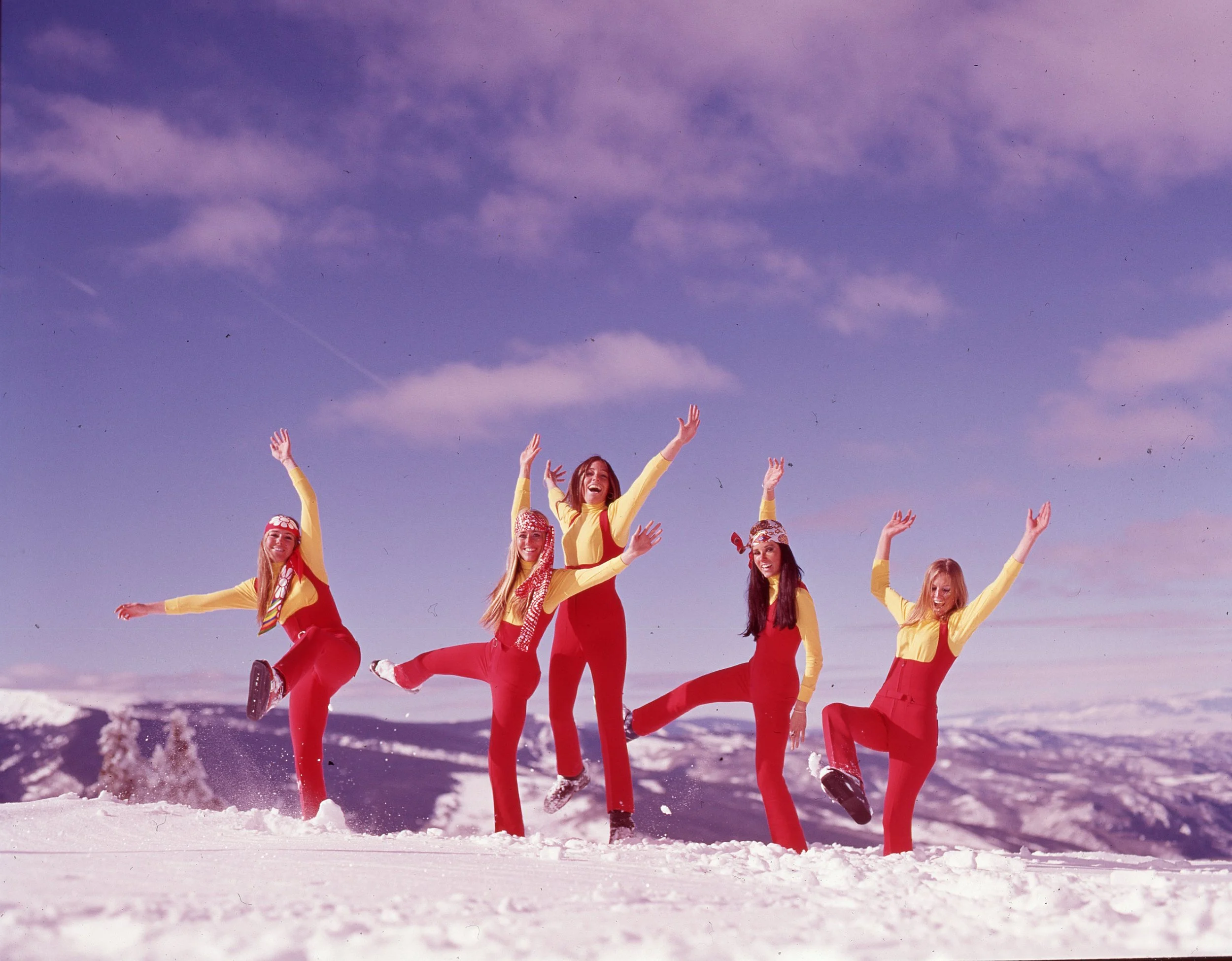soaring on the slopes
Wini Jones and the power of positivity
Words by Linda Kramer Jenning
Photos courtesy of Wini Jones
If, like Wini Jones, you started skiing back when everyone added layer upon layer of bulky clothing in a doomed attempt to stay warm, then you’ll appreciate the skiwear innovations she helped pioneer to keep us snug and flexible when we hit the slopes this season.
Jones will be there too. At 79, the former design and marketing director for Roffe Accessories, Inc., still skis competitively. She also continues to exercise her entrepreneurial savvy to advise new generations of innovators at the University of Washington Foster School of Business. Nonprofits and civic initiatives on Bainbridge Island, where she was named Citizen of Year in 2006, also benefit from her counsel.
In all she does, Jones follows a key principle, one she shares with the students she mentors. “I always believed, ‘if you think you can, or if you think you can’t, you’re right,’” says Jones. “That is so true, because if you think you can’t do it, you won’t do it. It’s the power of positivity.”
From an early age, Jones demonstrated that positivity. She grew up in Calgary, Alberta, and began skiing at age three on Mt. Norquay in Banff. She also began sewing and, by 14, was making her own skiwear.
“I very much remember jackets with tiny little collars,” she says of her early years skiing and shivering. “I said, ‘This is stupid. You can get cold. How about a collar that is big, like five inches?’ I thought, ‘Okay, I’ll design ski wear.’”
At 16, she sold a few outfits at a small fashion show in Calgary. Her path set, she went on to major in textile science and French at the University of Montana and then studied at a specialized design school in Vienna.
Jones recalls how one of her design teachers in Vienna encouraged students to look around the room for inspiration—that the parquet on the floor might suggest a quilt pattern or window blinds might suggest a certain kind of pleating. “It’s disciplined creativity,” says Jones. “Years later, I remember designing a down jacket based on looking at a spinnaker sail while on the ferry. It had stripes going one way on half of it and horizontal stripes on the back. So I took that and used it. You need to learn to see design virtually in all things and turn it into clothing.”
While studying in Montana and Austria, Jones also kept advancing her ski skills. She competed on her college ski team and later achieved certification with the Canadian Ski Instructors' Alliance. In Austria, she taught skiing during school breaks. After finishing her studies, Jones continued to teach skiing while traveling around Europe, eventually returning to the states to begin her career.
In the U.S., she showed her portfolio to skiwear companies like White Stag in Portland and Roffe in Seattle. She still has that portfolio in the office at her home on Bainbridge Island. Flipping through the designs during our interview, we both were struck by how some have easily stood the test of time and would look chic today on the slopes, perhaps in bright colors and with a strategically aligned buckle and pocket.
“Simplicity is the essence of good design,” Jones says. “I don’t do froufrou.”
At age 23, her portfolio got her a job at Roffe Accessories. She stayed with the company for three decades, designing clothes and helping develop fabrics with new kinds of insulation, while ushering her creations through marketing and sales.
Skiers from President Gerald Ford to actor Robert Redford (size 31 long stretch pants, she notes) wore her designs on the slopes, as did the 1973 U.S. Ski Team. In 1987, Jones was elected to the Council of Fashion Designers of America.
Recalling some of her designs, Jones cites a Woodstock reversible side-zip warmup pant. One side had a photo of faces taken from the stage at Woodstock that Jones had printed on 60-inch fabric (see photo below). Her ongoing quest for fabrics that would keep skiers warm led her to work with Polartec and 3M and to the use of insulation made from recycled pop bottles with the promo line: “Roffe is turning trash into treasure.” When GoreTex came out, she tried using it for pants, but at the time it was too stiff to catch on. Years later, she found one of those pairs still hanging on a sales rack in Sun Valley.
Fluent in German and French, her work with Roffe took her to trade shows and business meetings from New York to Tokyo. She often was the only woman in a meeting and had a strategy to establish her presence. “I always made sure to get there early, and I’d sit at the head of the table. I’d take everything out of my briefcase and lay it out before everybody walked in.”
When Sam Roffe died in 1994, the company was sold. Its skiwear can still be found through online sites, showing the durability of Jones’ designs. After nearly three decades at Roffe, Jones retired. Or she rewired. Still only in her 50s and no longer facing the daily commute to Seattle, she turned her attention to Bainbridge Island. She helped launch a public access television station (BITV), served on nonprofit boards, including the Historical Society, Bainbridge Performing Arts and the West Sound Wildlife Shelter, and was president of the island’s economic council. Most recently, she led a successful effort to spare the life of a 300-year-old fir tree when a new roundabout on Highway 305 goes in near the entrance to her street.
Jones is a director of the International Skiing History Association, which publishes a feature magazine and seeks to preserve ski history and increase awareness of the sport’s heritage. She also serves on several advisory panels at the University of Washington Foster School of Business. One of her advisory roles involves a class called “Create a Company,” where students put a business plan together in the first quarter and borrow money from the university to get it started. They have to pay the money back in the second quarter or they fail.
“That’s good motivation,” says Jones, who has been impressed by the students in these classes and in competitions she helps evaluate. “You just feel the world is in good hands. The kids are so sharp and come up with absolutely great ideas.” For example, she describes a team that worked on a prototype of a plastic gizmo that would hold skis and poles together to make them easier to carry around.
These days, Whistler-Blackcomb, about six hours away, is Jones’ home mountain—she had her season pass in hand months ahead of opening day. She’ll be wearing a bright neon yellow jacket when she soars downshill “so that I am seen on the mountain by friends and before someone crashes into me.”
At the top of the mountain, ready for her first run, Jones says she always “feels calm, emotionally home. It takes a few runs for me to find my ski groove again.”
And then she’s off.




